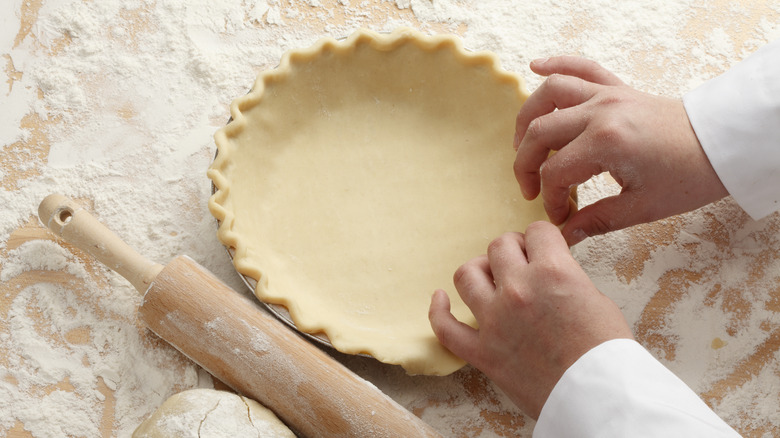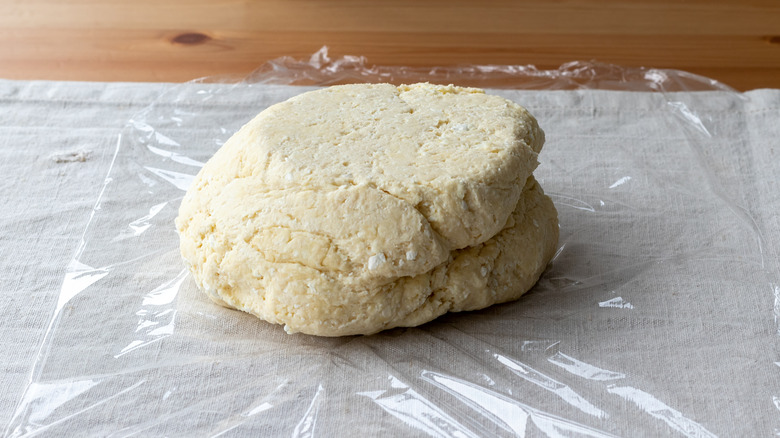Roll Out Pie Dough On Plastic Wrap For Easy Transfer Into The Pan
Transferring rolled-out pie dough to a fluted tin or baking pan is a delicate balancing act because pastry has a dainty texture that can easily stretch and tear. This process is much easier if you roll your dough between two sheets of plastic wrap before laying it gently over your pie plate.
Some experienced bakers prefer to fold their rolled pie dough into quarters, lift it, and place it over the tin before unfolding it. However, this can be tricky if your dough is very soft as the edges of the tin can cut into the yielding pastry before you've had time to ease the sides into the fluted edges of your pan. Placing the dough over a rolling pin and lifting it towards the tin is another common technique but if this motion isn't completed quickly enough, the pastry can stretch or tear from its own weight as it hangs. Luckily, all you'll need are a couple of sheets of plastic wrap, a rolling pin, and a dusting of flour for a foolproof solution to this problem.
Place the first piece of plastic wrap down on your counter and dust it lightly with an even sprinkling of flour before setting your chilled dough in the center. Sprinkle more flour over the pastry and then place your second sheet of plastic wrap directly on top of it before you get rolling. Once your pastry has reached your desired size, it's time to make the transfer.
How to transfer pie dough using plastic wrap
Remove the plastic wrap on top of the dough and flip the whole thing over so the pastry sheet is resting on your forearms. The plastic wrap that was on the bottom, against the counter, should now be on top. Lower your arms closely over your pie dish and gently move them away from each other in an outward direction. The dough will fall neatly onto the dish, allowing you to peel off and discard the plastic wrap on the top. Finally, guide the pastry down into the base and along the fluted sides of your pan using your fingers. You should be left with a flawlessly lined pastry dish with an even thickness that's free from any annoying holes that need to be patched up. If you find that you're rolled pastry has torn after doing all this, try chilling it in the fridge before you transfer it next time. Simply place it on a baking tray, along with the plastic wrap until it becomes easier to work with.
Now that you have a showstopping pan of pie dough, why not try blind baking your crust to make a buttery base for a lemon meringue pie? Alternatively, pile in your favorite fillings, lattice the top, and glaze it with beaten egg before baking for an appetizingly golden result.

